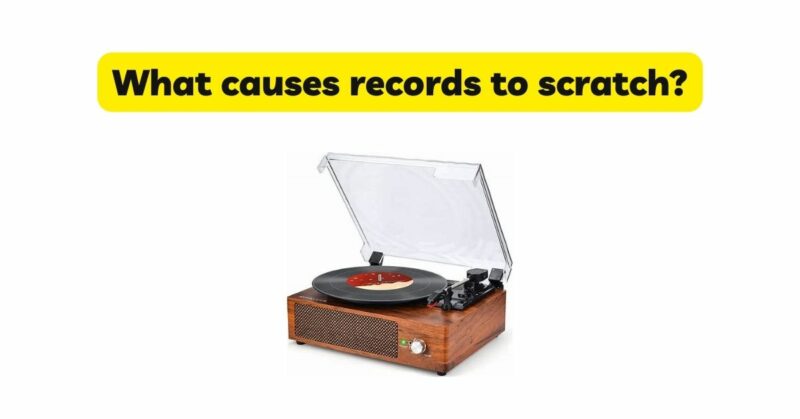Vinyl records have experienced a remarkable resurgence in popularity, captivating music enthusiasts with their distinct sound and nostalgic appeal. However, one of the concerns that comes with owning vinyl records is the potential for scratches, which can compromise the audio quality and overall listening experience. It is essential to understand the factors that can lead to record scratching in order to prevent damage and preserve these cherished musical artifacts. This article aims to explore the various causes of record scratching, shedding light on the mechanisms behind it and providing insights into effective preventive measures.
Physical Contact: One of the primary causes of record scratching is physical contact with abrasive objects or surfaces. When a vinyl record comes into contact with a rough or sharp object, such as a needle, dust particles, or even the surface of another record, it can result in scratches. Mishandling records, careless storage practices, or placing records on unprotected surfaces can all contribute to physical scratches. Proper handling techniques, utilizing protective sleeves, and ensuring a clean playback environment can help minimize the risk of physical contact-induced scratching.
Dust and Debris: Dust and debris are common adversaries that can cause scratches on vinyl records. As records are exposed to their environment, dust particles settle on the surface and find their way into the record’s grooves. When played with a stylus, these particles act as abrasives, potentially creating scratches as they move along the grooves. Regular cleaning and maintenance, using appropriate record cleaning tools and techniques, can help remove dust and debris, reducing the risk of scratching during playback.
Faulty Turntable Setup: An incorrectly set up turntable can contribute to record scratching. Issues such as an imbalanced tonearm, misaligned cartridge, improper tracking force, or a worn-out stylus can result in excessive pressure or misalignment during playback. This can cause uneven contact between the stylus and the record, leading to scratches. Regular maintenance and calibration of the turntable, including proper tonearm adjustment, cartridge alignment, and stylus replacement, are crucial to ensuring a well-balanced and properly tracking setup, reducing the risk of scratching.
Poor Storage Conditions: Inadequate storage conditions can also contribute to record scratching. Storing records without protective sleeves or jackets or stacking them too tightly can result in surface-to-surface contact, leading to scratches. Additionally, storing records in an environment with high humidity or extreme temperature fluctuations can cause warping, which can further exacerbate the risk of scratches during playback. Proper storage practices, including using protective sleeves or jackets, storing records vertically, and maintaining a stable and controlled storage environment, can help prevent scratches caused by poor storage conditions.
Improper Cleaning Techniques: While cleaning records is essential for maintaining their condition, using improper cleaning techniques can inadvertently cause scratching. Rough or abrasive cleaning materials, excessive pressure, or incorrect cleaning fluids can damage the record surface and result in scratches. It is crucial to follow recommended cleaning methods, such as using specialized record cleaning brushes or vacuum-based record cleaning machines, along with suitable cleaning solutions designed specifically for vinyl records. Gentle, circular motions during cleaning can help minimize the risk of scratching.
Wear and Tear: Like any physical medium, vinyl records are subject to wear and tear over time. Each playthrough involves the stylus coming into contact with the grooves, causing microscopic friction. While records are designed to withstand repeated plays, excessive use or using a worn-out or damaged stylus can accelerate surface deterioration and increase the likelihood of scratches. Regular stylus inspection and replacement, along with minimizing the playback of heavily damaged or worn records, can help mitigate the risk of scratching due to wear and tear.
Conclusion: Record scratching is a concern for vinyl record enthusiasts, as it can impact the sound quality and overall enjoyment of the listening experience. Understanding the causes of record scratching, including physical contact, dust and debris, faulty turntable setup, poor storage conditions, improper cleaning techniques, and wear and tear, empowers collectors and enthusiasts to take proactive measures in preventing scratches. By adopting proper handling, storage, cleaning, and maintenance practices, vinyl record owners can safeguard their cherished music collections and ensure a pristine and uninterrupted sonic journey for years to come.


